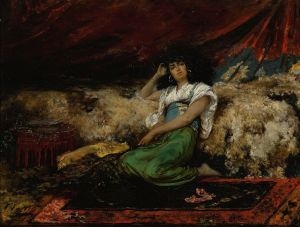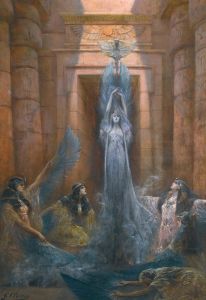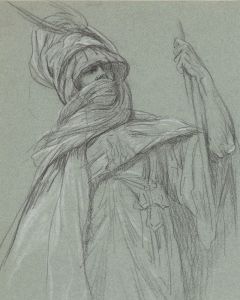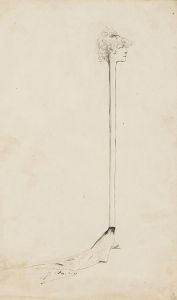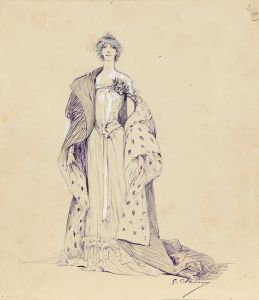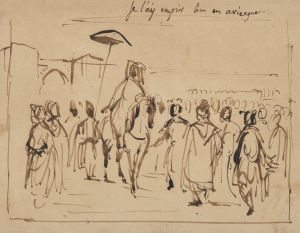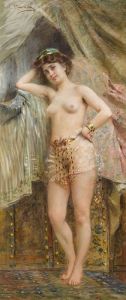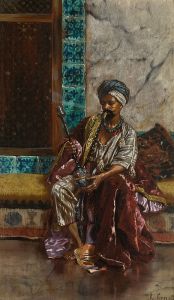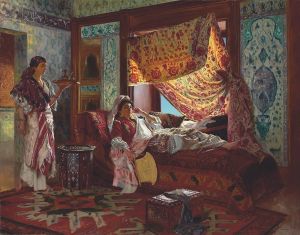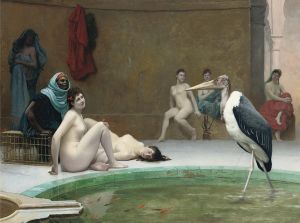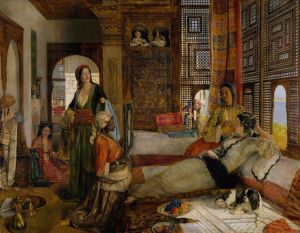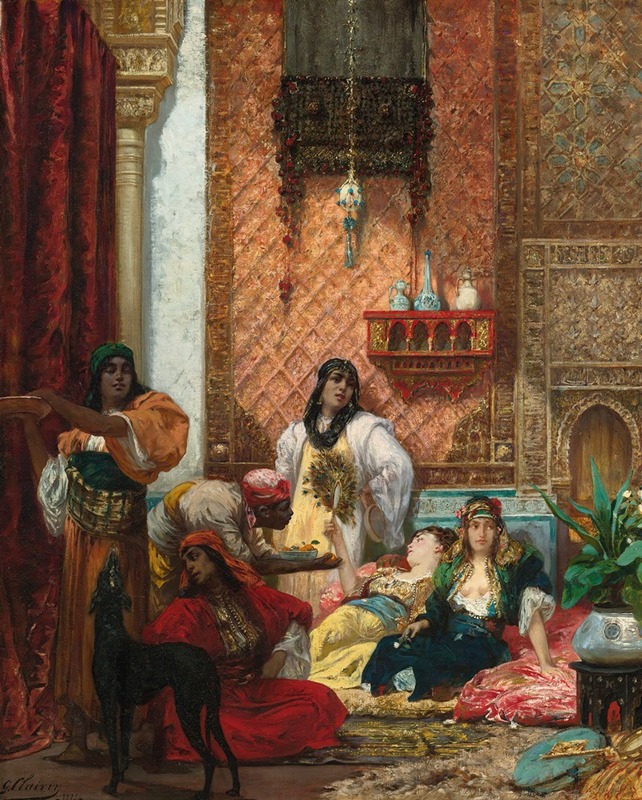
The Sultan’s Favorites
A hand-painted replica of Georges Jules Victor Clairin’s masterpiece The Sultan’s Favorites, meticulously crafted by professional artists to capture the true essence of the original. Each piece is created with museum-quality canvas and rare mineral pigments, carefully painted by experienced artists with delicate brushstrokes and rich, layered colors to perfectly recreate the texture of the original artwork. Unlike machine-printed reproductions, this hand-painted version brings the painting to life, infused with the artist’s emotions and skill in every stroke. Whether for personal collection or home decoration, it instantly elevates the artistic atmosphere of any space.
Georges Jules Victor Clairin was a French painter known for his Orientalist works, which often depicted exotic and romanticized scenes from the Middle East and North Africa. One of his notable paintings is "The Sultan’s Favorites," which exemplifies his fascination with the opulence and mystique of Eastern cultures. Clairin was part of a broader 19th-century European artistic movement that sought to capture the allure of the Orient, a term used at the time to describe parts of Asia and North Africa.
"The Sultan’s Favorites" is an oil painting that showcases Clairin's skill in rendering luxurious fabrics, intricate details, and atmospheric settings. The painting typically features a group of women in a lavish interior, presumably part of a harem, which was a common subject in Orientalist art. These women are often depicted in relaxed poses, surrounded by sumptuous textiles and ornate decor, emphasizing a sense of leisure and indulgence. Clairin's use of color and light adds to the exotic and dreamlike quality of the scene, inviting viewers into a world of fantasy and escapism.
Clairin's work, including "The Sultan’s Favorites," reflects the 19th-century European fascination with the Orient, which was often based on stereotypes and romanticized notions rather than accurate representations. Orientalism, as a genre, has been critiqued for its portrayal of Eastern societies as static, exotic, and fundamentally different from the West. These depictions often ignored the complexities and realities of the cultures they represented, instead offering a Western-centric view that reinforced colonial attitudes.
Despite these critiques, Clairin's technical prowess and ability to create captivating compositions are evident in "The Sultan’s Favorites." His attention to detail and ability to convey texture and atmosphere demonstrate his skill as a painter. The painting is a testament to the allure of Orientalist art during its time, appealing to Western audiences' curiosity and desire for the exotic.
Georges Clairin was a contemporary of other notable Orientalist painters, such as Jean-Léon Gérôme and Eugène Delacroix, who also explored similar themes in their work. Clairin's paintings were well-received in his time, and he exhibited regularly at the Paris Salon, a prestigious art exhibition in France. His works contributed to the popularity and dissemination of Orientalist art in Europe.
Today, "The Sultan’s Favorites" can be appreciated for its artistic qualities while also serving as a historical artifact that offers insight into the cultural attitudes and artistic trends of 19th-century Europe. It invites viewers to consider the ways in which art can both reflect and shape perceptions of different cultures. As with many works of Orientalist art, it is important to approach "The Sultan’s Favorites" with an understanding of its historical context and the broader implications of its portrayal of Eastern societies.






